The Fiber Dilemma – Eating Plant-Based Without Tummy Trouble by SamHoughton for CNS
Is the Ketogenic Diet Natural for Humans? by Robyn Chuter, ND for CNS
The Disconnect Between Science and Policy by Dr Michael Greger
The Downside of Curcumin Supplements by Dr Michael Greger
The Anatomy Of A Bowel Movement (And How To Cure Constipation) by Dustin Rudolph, PharmD
Fibre by nutritionfacts.org
Evidence-Based Eating Guide: A Healthy Living Resource by Dr. Greger
Fruit Juice by Nutritionfacts.org
Exercise intensity: How to measure it by the Mayo Clinic
The Purported Benefits of Eating Fish by Dr Michael Greger
Flax seeds by Dr Michael Greger
When Friends Ask: Why Do You Avoid Adding Vegetable Oils? by John McDougall
Plant Oils Are Not a Healthy Alternative to Saturated Fat by T. Colin Campbell
Vegetable oils by Allen for nutritionfacts.org
Obesity by Linda for nutritionfacts.org
Osteoarthritis by Matthew B, MD for nutritionfacts.org
Introducing the Evidence-Based Eating Guide by Dr Michael Greger
What are the hazards of oxalates? by Joseph Gonzales, R.D. for nutritionfacts.org
We Have Specific Fruit and Vegetable Receptors by Dr Michael Greger
Fat is the Cause of Type 2 Diabetes by Dr Michael Greger
How to Help a Meathead by Dr John McDougall
The Myth of Alkalizing Your Body by Robyn Chuter (CNS)
Excess weight does not protect against heart disease by Dr Joel Fuhrman
Fasting for Healing by Dr Alan Goldhamer
Denis Burkitt and the origins of the dietary fibre hypothesis on CambridgeCore
Reversing Type 2 Diabetes by Joel Fuhrman, MD
Simple Care for Diabetes by Dr McDougall
Walter Kempner: Reversing Diabetic Blindness with Diet by Dr Greger
Interview with Dr. Michael Klaper by All-Creatures.org
How to Reverse Type 2 Diabetes by Dr Greger
Low Carb Hot Air—Again, again and again! by Dr T Colin Campbell
Good Carbs vs Bad Carbs – What Are You Eating? by the Pritikin Centre
Splenda Side-Effects by Dr Greger
Alzheimer’s Disease and Dietary Copper by Dr Greger
Raw vs. Cooked Garlic and Onions for Blood Thinning by Dr Greger
No Whey, Man. I’ll Pass on the Protein Powder by Robert Cheeke
Milk and Prostate Cancer: The Evidence Mounts by the PCRM
Don’t Be Confused by Big Salt by Dr Greger
How Many Servings of Fruits and Vegetables to Improve Mood? by Dr Greger
Soy – Food, Wonder Drug, or Poison? by Dr John McDougall
Reduce Acid-Forming Proteins to Protect Kidney Function by Dr Michael Greger
Dr. Campbell’s recommendations for Dietary Guidelines by Dr T. Colin Campbell, PhD
The Best Food for Fibroids by Dr Michael Greger
Acid/base Balance by nutritionfacts.org
Conservative Management of Diabetes by Alan Goldhamer, D.C.
Reductionist Paradigm: The Cause of Nutrition Confusion by Dominic Marro
Reasons You Should Include Exercise in Your Diet Plan by Thomas Campbell, MD
Why Pepper Boosts Turmeric Blood Levels by Dr Michael Greger
Want to Live to 100? Eat More Beans! by Pritikin Longevity Center
How to Build Muscle on a Plant-Based Diet by Robert Cheeke for Forks Over Knives
The Eskimo Myth by Dr Michael Greger
“Vegan,” “Plant-Based,” “Starchivore”: What Do You Call Yourself? by Dr John McDougall
To Juice or Not to Juice? What’s A Bottle of Magic Worth? by Dr John McDougall
Dietary fibre and health: an overview by The British Nutrition Foundation
Meat consumption and mortality–results from the European Prospective Investigation into Cancer and Nutrition in BMC Med
Meat intake and mortality: a prospective study of over half a million people in Arch Intern Med
Animal and plant protein intake and all-cause and cause-specific mortality: results from two prospective US cohort studies in JAMA Intern Med
Epigenetics: The sins of the father. The roots of inheritance may extend beyond the genome, but the mechanisms remain a puzzle. by Virginia Hughes for Nature
The Sad ‘Standard American Diet’ Is Taking Over the World by Tove Danovich
Standard American Diet by Dr Michael Greger
Ocean Pollution: The Dirty Facts. We’re drowning marine ecosystems in trash, noise, oil, and carbon emissions by NRDC
Don’t Take the Bait – Fish is NOT a Health Food by PCRM
Animal Protein Linked to Death by Thomas Campbell, MD
Animal vs. Plant Protein by T. Colin Campbell, PhD
Plant Protein by Dr Michael Greger
Animal Protein by Dr Michael Greger
Algae: our original omega-3 source by Wageningen University & research
The Risks of Fish Oil Supplements by Dr Michael Greger
Collapsing Fisheries – Have We Reached the End of the Line? by Oceaneos
Veganism: Why is it on the up? by Lora Jones. Business Reporter, BBC News
Cowspiracy: The Facts by cowpiracy.com
Impact of Food Choices on the Environment by Bruce Monger, PhD for CNS
Hidden Costs of Industrial Agriculture by The Union of Concerned Scientists
Eggs – New Heart Health Food? Or Rotten Reporting? by Conor Kerley, PhD for CNS
How Much Protein Do We Need? RDA vs. Dietary Guidelines by Micaela Karlsen, MSPH for T Colin Campbell’s Centre for Nutrition Studies.
How Fibre Helps Protect Against Cancer by the PCRM
How Vitamin E Helps Protect Against Cancer by the PCRM
How Selenium Helps Protect Against Cancer by the PCRM
Polyphenols by Louisa on nutritionfacts.org
T Colin Campbell CNS: The Great Grain Debate by Elizabeth Borelli
Aflotoxins. WHO Food Safety Digest, February 2018 by the World Health Organisation
How Carotenoids Help Protect Against Cancer by the PCRM
The Risks and Benefits of Calcium Supplements by Dr Michael Greger
Calcium in Plant-Based Diets by PCRM
Why Is Milk Consumption Associated with More Bone Fractures? by Dr Michael Greger
Review of salt consumption and stomach cancer risk: Epidemiological and biological evidence by Xiao-Qin Wang, Paul D Terry, and Hong Yan
What a Single Fatty Meal Can Do to Our Arteries by Dr Michael Greger
Plant versus Animal Iron by Dr Michael Greger
Star Jennifer Lost 26 Pounds – John McDougall Success Story by Jennifer
How To Create Your Own Vegan Athlete Meal Plans by Robert Cheeke
Focus on What You Want Most, Rather Than What You Want Now by Robert Cheeke
How to Build Muscle on a Plant-Based Diet (Forks Over Knives article) by Robert Cheeke
How to Build Muscle on a Plant-Based Diet: Staple Foods, Meal Plans, and Philosophy by Robert Cheeke
Added Oils: The Elephant In The Room by Jeff Novick, MS, RDN
Is Fish Part of a Healthy Diet? by Dustin Rudolph, PharmD
The Smoke and Mirrors behind Wheat Belly and Grain Brain by Dr John McDougall
Antioxidant Supplements Increase Mortality by Dr Michael Greger
Plant-Based Diets Put to the Test for Diabetes by Dr Michael Greger
How to Prevent Gut Inflammation by Michael Greger
We Are Human-Microbe Superorganisms by Dr Michael Greger
Which Vegetables Have the Most Nitrates by Dr Michael Greger
The Risks of Fish Oil Supplements by Dr Michael Greger
Who’s Right in the Salt Debate? by Dr Michael Greger
How much pus is there in milk? by Dr Michael Greger
10 Best Vegan Vitamin D Sources: D2 Foods & D3 Supplements by Superfoody
Stanford researcher declares that the sixth mass extinction is here by Rob Jordan.
Nature Does Not Negotiate by Howard Lyman
GMO Dangers: Facts You Need to Know by T Colin Campbell.
A Fat to Forget: Trans Fat Consumption and Memory
A plant-based diet for the prevention and treatment of type 2 diabetes
What About Eating Just a Little Meat?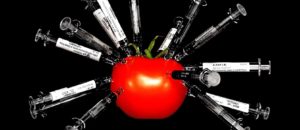
Written By Michael Greger M.D. FACLM
Studies going back half a century found that those eating meat one or more days a week had significantly higher rates of diabetes, and the more frequently meat was eaten, the more frequent the disease. Read full article…
Healthy Weight Loss = 80% Nutrition + 20% Exercise
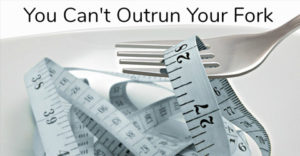
By Terri Edwards, Instructor at the Centre for NutritionStudies
Around 1995, I was twenty-eight years old and somewhat overweight. I began an excruciating exercise program of power walking/jogging 35-40 miles per week, plus an additional 20 miles on the bike. Did I lose the weight? Sure. Think of the calories I was burning! I thought I was eating healthier too, but learned later that what I thought was healthy, really wasn’t. Read full article…
Effects of 7 days on an ad libitum low-fat vegan diet: the McDougall Program cohort
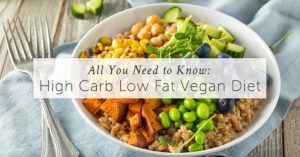
John McDougall, Laurie E Thomas, Craig McDougall, Gavin Moloney, Bradley Saul, John S Finnell, Kelly Richardson and Katelin Mae Petersen. Nutrition Journal201413:99 © McDougall et al.; licensee BioMed Central Ltd. 2014
Epidemiologic evidence, reinforced by clinical and laboratory studies, shows that the rich Western diet is the major underlying cause of death and disability (e.g, from cardiovascular disease and type 2 diabetes) in Western industrialized societies. The objective of this study is to document the effects that eating a low-fat (≤10% of calories), high-carbohydrate (~80% of calories), moderate-sodium, purely plant-based diet ad libitum for 7 days can have on the biomarkers of cardiovascular disease and type 2 diabetes. Read full article…
Best Food for the Common Cold
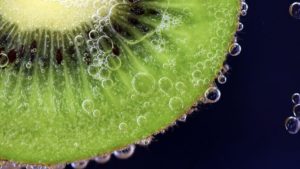
It is well known that deficiencies in certain vitamins and minerals can lead to significant impairment of immune function and an increased susceptibility to infection that can be reversed by supplementation in deficient individuals. “However, it is unclear to what extent supplementation may aid in maintaining an optimal balance within the immune system in adequately nourished individuals.” As I discuss in my video, Kiwifruit for the Common Cold,researchers in New Zealand tried supplementing with whole kiwifruit. In a petri dish, gold kiwifruit puree appeared to boost natural killer cell activity in human blood and also boost the response to the tetanus vaccine. But, does the same thing that happens in a petri dish happen in people? In another study, researchers found that two immune-related sets of genes were upregulated by eating three kiwifruit a day. But, does that translate into actually helping us fight off infection? We didn’t know the answer until recently.
Researchers in New Zealand found that the consumption of gold kiwifruit reduces the severity and duration of certain upper respiratory tract infection symptoms. Why study gold kiwifruits? The study was funded by the company that owns the patent to gold kiwifruits. Read full article…
Introduction: More Than Coronary Artery Disease
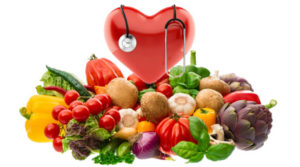
by Caldwell B. Esselstyn Jr. M.D.
[There is] an unreasonable gap between the medical enthusiasm devoted to acute interventions and the meager efforts currently devoted to secondary prevention.
— Rene C. Favaloro, MD
Pioneer of Coronary Artery Bypass Grafting
Interventional cardiology is symptomatic treatment. The late Dr. Lewis Thomas referred to this ap proach as “half-way technology,” meaning that basic mechanisms of disease were not identified or treated. The bypass operation has significant mortality and morbidity, including further heart damage, stroke, and brain dysfunction. The benefits are at best temporary, since most grafts eventually close, and the patient faces further intervention or a life of progressive dis ability and death from the disease. Angioplasty has a 40% failure rate after 6 months,’ as well as significant mortality and morbidity and, frequently, further heart damage.2 Variations to prevent restenosis include stenting with a wire cage, radiation to the balloon- fractured artery to compromise the inflammatory response, or use of a $1,400-per-dose drug to decrease the likelihood of thrombosis.
The futility of intervention as a strategy to avoid future acute coronary events or mortality is well recognized. The lesions targeted for intervention–those with >70% stenoses–infrequently account for sub sequent coronary events; this was documented recently by serial angiography before and after coronary events.3 Furthermore, elective angioplasty does not decrease the risk of myocardial infarction or death. Bypass surgery does not decrease the risk of myocardial infarction, and it benefits survival only in high- risk subsets.4 Read full article…
Plant-Based Is Not the Same as Vegetarianism
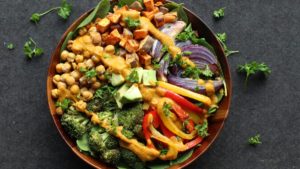
Referring to heart disease, Dr. Caldwell B. Esselstyn, Jr., MD asks, “Why is there reticence to provide the public with guidelines that will spare them this disease or its progression?” in an article published in The American Journal of Cardiology. “The National Research Council position was that a dietary fat recommendation lower than 30% would be too frustrating for those attempting to achieve a significant reduction. Although it is uncertain to what extent people will adopt the advice, it is nevertheless scientifically and ethically imperative to inform the public what constitutes an optimal diet. We must tell the public the truth about what is best for their health, and let them decide their degree of compliance,” he asserts.
My video Optimal Diet: Just Give It to Me Straight, Doc describes how Dr. Esselstyn challenged an expert panel to answer these questions from patients: “I’ll do anything, but I never want to have heart disease” and “I’ve had a heart attack, and I never want another.” Answers ranged from having them “eat beans, beans, and more beans” to it’s “time for the public to embrace a plant-based diet.”
The recommended plant-based diet is not the same as vegetarianism. Vegetarians often consume all sorts of less-than-healthful foods, such as oils, margarine, dairy products, and eggs. Vegans do, too, for that matter. “This new paradigm is exclusively plant-based nutrition,” Dr. Esselstyn explains. In other words, it consists only of whole plant foods. Why exclusively? Because, as reported in the Cornell China Study, there does not appear to be “a threshold beyond which further benefits do not accrue with increasing proportions of plant-based foods in the diet.” It appears the more plant-based foods and the fewer animal-based foods, the better. Read full article…
What a Single Fatty Meal Can Do to Our Arteries

The phenomenon of postprandial angina was described more than 200 years ago: chest pain that occurs after a meal, even if you’re just sitting down and resting. This could be intuitively attributed to redistribution of blood flow away from the heart to the gut during digestion. However, such a mechanism could not be demonstrated experimentally.
The problem appears to be within the coronary arteries themselves. The clue came in 1955 when researchers found they could induce angina in people with heart disease just by having them drink fat. My video Fatty Meals May Impair Artery Function includes a fascinating graph of so-called lactescence, or milkiness, over time. It shows how their blood became increasingly milky with fat over the next five hours, and each of the ten attacks of angina was found to occur about four-and-a-half to five hours after the fatty meal, right when blood milkiness was at or near its peak. After a nonfat meal with the same bulk and calories, but made out of starch, sugar, and protein, no anginal pain was elicited in any of the patients.
To understand how the mere presence of fat in the blood can affect blood flow to the heart, we need to understand the endothelium, the inner lining of all of our blood vessels. Our arteries are not just rigid pipes; they are living, breathing organs that actively dilate or constrict, thinning or thickening the blood and releasing hormones, depending on what’s needed. This is all controlled by the single inner layer, the endothelium, which makes it the body’s largest endocrine (hormone-secreting) organ. When it’s all gathered up, the endothelium weighs a total of three pounds and has a combined surface area of 700 square yards. Read full article…
Chocolate is Finally Put to the Test
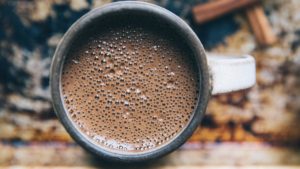
Botanically speaking, seeds are small embryonic plants—the whole plant stuffed into a tiny seed and surrounded by an outer layer packed with vitamins, minerals, and phytochemicals to protect the seedling plant’s DNA from free radicals. No wonder they’re so healthy. By seeds, using the formal definition, we’re talking all whole grains; grains are seeds—you plant them and they grow. Nuts are just dry fruits with one or two seeds. Legumes (beans, peas, and lentils) are seeds, too, as are cocoa and coffee beans. So, finding health-promoting effects in something like cocoa or coffee should not be all that surprising. There is substantial evidence that increased consumption of all these little plants is associated with lower risk of cardiovascular disease.
Of course, much of chocolate research is just on how to get consumers to eat more. While it didn’t seem to matter what kind of music people were listening to when it came to the flavor intensity, pleasantness, or texture of a bell pepper, people liked chocolate more when listening to jazz than classical, rock, or hip hop. Why is this important? So food industries can “integrate specific musical stimuli” in order to maximize their profits. For example, purveyors may play jazz in the background to increase consumers’ acceptance of their chocolates. Along these lines, another study demonstrated that people rated the oyster eaten “more pleasant in the presence of the ‘sound of the sea’ than in the presence of ‘farmyard noises.’” Read full article…
Brown Fat: Losing Weight Through Thermogenesis
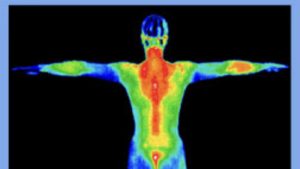
During World War I, it was discovered that many of the chemicals for new explosives had toxic or even lethal effects on the workers in the munitions factories. Chemicals such as di-nitro-phenol (DNP) can boost metabolism so much that workers were too often found wandering along the road after work, covered in sweat with temperatures of 106 to 109 degrees Fahrenheit before they died. Even after death, their temperatures kept going up, as if they were having a total body meltdown. At subacute doses, however, workers claimed to have grown thin to a notable extent after several months working with the chemical.
That got some Stanford pharmacologists excited about the “promising metabolic applications” of DNP. Our resting metabolic rate jumps up 30% after one dose of DNP, and therefore, it becomes an actual fat-burning drug. People started losing weight, as you can see in my video Brown Fat: Losing Weight Through Thermogenesis, with no apparent side effects. They felt great… and then thousands of people started going blind and users started dropping dead from hyperpyrexia, fatal fever due to the heat created by the burning fat. Of course, it continued to be sold. Ad copy read:
“Here, at last, is a [weight] reducing remedy that will bring you a figure men admire and women envy, without danger to your health or change in your regular mode of living….No diet, no exercise!” Read full article…
Heart of Gold: Turmeric vs. Exercise

The endothelium is the inner lining of our blood vessels. Laid end-to-end, endothelial cells from a single human would wrap more than four times around the world. And it’s not just an inert layer; it’s highly metabolically active. I’ve talked before about how sensitive our endothelium is to oxidation (The Power of NO) and inflammation (The Leaky Gut Theory). If we don’t take care of it, endothelial dysfunction may set us up for heart disease or a stroke. Are we ready to heed our endothelium’s early warning signal?
If it’s all about oxidation and inflammation, then fruits and vegetables should help. And indeed, it appears they do. Each daily serving of fruits or vegetables was associated with a 6% improvement in endothelial function. These fruit- and vegetable-associated improvements in endothelial function are in contrast to several negative vitamin C pill studies that failed to show a benefit. It can be concluded that the positive findings of the fruit and vegetable study are not just because of any one nutrient in fruits and veggies. Rather than searching for the single magic bullet micronutrient, a more practical approach is likely to consider whole foods. Increasing fruit and vegetable consumption is likely to have numerous benefits due to synergistic effects of the plethora of wonderful nutrients in plants. Read full article…
How Too Much Cholesterol Can Contribute to Alzheimer’s Disease

Millions suffer from Alzheimer’s disease, and the available and foreseeable treatments are disappointing at best. Given the absence of disease-modifying treatments, there has been growing interest in effective strategies for the prevention of the disease in the first place. Even if we were able to just delay the onset by as little as 1 year, we could potentially prevent more than 9 million cases over the next 40 years. Once cognitive functions are lost in Alzheimer’s disease patients, they may be lost forever. Consequently, prevention, rather than a cure for Alzheimer’s disease appears to be a more realistic strategy to offset the catastrophic impact of this dementia.
As I discuss in my video Cholesterol & Alzheimer’s Disease “[c]onsiderable evidence now indicates that Alzheimer’s disease (AD) is primarily a vascular disorder,” based on a number of lines of evidence that point toward impaired circulation of blood to the brain. Vascular risk factors, such as high cholesterol, can be thought of as a ticking time bomb to Alzheimer’s disease. What’s bad for the heart may be bad for the mind.
Traditionally, there have been two competing theories for the cause of Alzheimer’s: the amyloid cascade model, which implicates the buildup of amyloid plaques within the brain, and the vascular model, which argues that it is the lack of adequate blood flow to the brain due to atherosclerosis. We now realize they are not mutually exclusive and that arterial disease can set up a vicious cycle in which atherosclerotic plaques in the arteries may contribute to Alzheimer’s plaques in the brain. Read full article…
Optimum Nutrition Recommendations
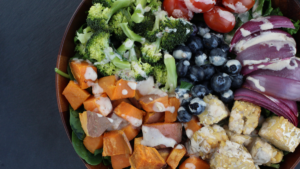
Updated 2/4/16
I go into specifics of the Daily Dozen foods I recommend in my video, Dr. Greger’s Daily Dozen. And for a more thorough dive into the science on these foods, check out my NYT best selling book, How Not to Die. The balance of scientific evidence suggests that the healthiest way to eat is a vitamin B12-fortified diet of whole plant foods. For optimum nutrition, we should be sure to include in our daily diet not only an array of whole grains, beans, nuts, seeds, fruit, and as many vegetables as we can eat, but also specifically dark green leafy vegetables, berries, and white (or green) tea.
Attention should also be paid to these nutrients:
Vitamin B12 (see also Which type of vitamin B12 is best)
- At least 2,500 mcg (µg) cyanocobalamin once each week, ideally as a chewable, sublingual, or liquid supplement taken on an empty stomach
- or at least 250 mcg daily of supplemental cyanocobalamin (you needn’t worry about taking too much)
- or servings of B12-fortified foods three times a day, each containing at least 25% U.S. “Daily Value” on its label
- Those over 65 years of age should take at least 1,000 mcg (µg) cyanocobalamin every day.
- Tip: If experiencing deficiency symptoms, the best test is a urine MMA (not serum B12 level)
- 250 mg daily of pollutant free (yeast- or algae-derived) long-chain omega-3’s (EPA/DHA) Read full article…
Stop Creating So Many Free Radicals in Your Colon
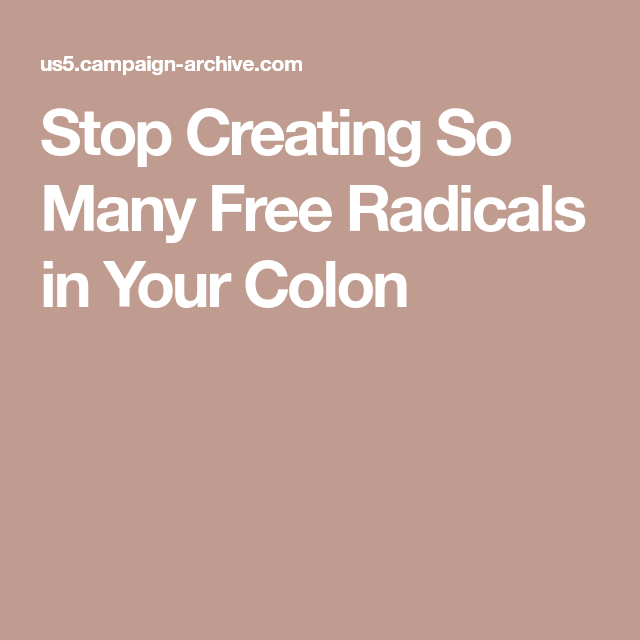
Colon cancer risk in Westernized populations may be reduced by decreasing animal product intake and thereby decreasing “aggressive” factors such as animal protein and fat. I’ve explored how animal protein can putrefy and produce the rotten egg gas that may be toxic to DNA (see Putrefying Protein and “Toxifying” Enzymes), but what about the fat? It can stimulate the synthesis and secretion of bile acids into the intestine.
Bile helps the body digest fats. So, more fat in the intestines means more bile in the intestines, which wouldn’t be a problem except bile acids, especially secondary bile acids, have long been suspected as being carcinogenic. Bile acids stimulate the growth of bacteria, which convert the primary bile acids our livers make into secondary bile acids. And, secondary bile acids have been shown to be cancer-causing. Read full article…
How to Design a Misleading Study to Show Diet Doesn’t Work

A study out of the University of North Carolina found no association between dietary fiber intake and diverticulosis. They compared those who ate the highest amount of fiber, 25 grams, to those who ate the smallest amount, which was three times lower at only 8 grams. Finding no difference in disease rates, researchers concluded that a low-fiber diet was not associated with diverticulosis.
The university sent out a press release entitled: “Diets high in fiber won’t protect against diverticulosis.” The media picked it up and ran headlines such as “High-fiber diet may not protect against diverticulosis, study finds.” It went all over the paleo blogs and even medical journals, publishing such statements as an “important and provocative paper…calls into question” the fiber theory of the development of diverticulosis. Other editorials, though, caught the study’s critical flaw. To understand this, let’s turn to another dietary deficiency disease: scurvy. Read full article…
Foods to Avoid to Help Prevent Diabetes
Written By Michael Greger M.D. FACLM on
We’ve known that being overweight and obese are important risk factors for type 2 diabetes, but, until recently, not much attention has been paid to the role of specific foods. I discuss this issue in my video, Why Is Meat a Risk Factor for Diabetes?
A 2013 meta-analysis of all the cohorts looking at the connection between meat and diabetes found a significantly higher risk associated with total meat consumption––especially consumption of processed meat, particularly poultry. But why? There’s a whole list of potential culprits in meat: saturated fat, animal fat, trans fats naturally found in meat, cholesterol, or animal protein. It could be the heme iron found in meat, which can lead to free radicals and iron-induced oxidative stress that may lead to chronic inflammation and type 2 diabetes, or advanced glycation end (AGE) products, which promote oxidative stress and inflammation. Food analyses show that the highest levels of these so-called glycotoxins are found in meat—particularly roasted, fried, or broiled meat, though any foods from animal sources (and even high fat and protein plant foods such as nuts) exposed to high dry temperatures can be potent sources of these pro-oxidant chemicals.
In another study, researchers fed diabetics glycotoxin-packed foods, like chicken, fish, and eggs, and their inflammatory markers––tumor necrosis factor, C-reactive protein, and vascular adhesion molecules––shot up. “Thus, in diabetes, environmental (dietary) AGEs promote inflammatory mediators, leading to tissue injury.” The good news is that restriction of these kinds of foods may suppress these inflammatory effects. Appropriate measures to limit AGE intake, such as eliminating meat or using only steaming and boiling as methods for cooking it, “may greatly reduce the already heavy burden of these toxins in the diabetic patient.” These glycotoxins may be the missing link between the increased consumption of animal fat and meats and the development of type 2 diabetes. Read full article…
Choosing to Have a Normal Blood Pressure

Written By Michael Greger M.D. FACLM on
For the first 90% of our evolution, humans ate diets containing less than a quarter teaspoon of salt a day. Why? Because we ate mostly plants. Since we went millions of years without salt shakers, our bodies evolved into salt-conserving machines, which served us well until we discovered salt could be used to preserve foods. Without refrigeration, this was a big boon to human civilization. Of course, this may have led to a general rise in blood pressure, but does that matter if the alternative is starving to death since all your food rotted away? But where does that leave us now, when we no longer have to live off pickles and jerky? We are genetically programmed to eat ten times less salt than we do now. Even many “low”-salt diets can be considered high-salt diets. That’s why it’s critical to understand what the concept of “normal” is when it comes to salt. Read full article …

